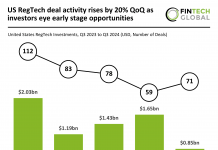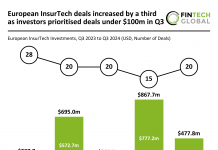Machine learning and social media are yet to fulfill promised impact on FinTech, but that may be set to change according to Colin Hanna from Balderton, in a research interview with FinTech Global.
Advances in artificial intelligence and machine learning have already begun filtering into the FinTech sector, with companies such as ZestFinance and Wecash received big investments over recent years. But despite its impressive potential and cutting-edge technology, question marks still remain over just how such a powerful emergent technology will fit into the myriad areas of the sector. Data and asset allocations appear prime regions for machine learning to flex its muscles according to Balderton Capital associate Colin Hanna, who spoke to FinTech Global.
“We have seen quite a lot of sectors where advancements in machine learning to actually solve algorithms and answer questions have increased exponentially,” he said. “However, I think that we have yet to see exactly how that is going to impact all the sectors of FinTech.”
FinTech Global data shows the Data and Analytics segment saw a big increase in investments for Q1 2017, recording $432m of capital compared to just $126m in Q4 2016 and $279m in Q1 2016. Within that segment Big Data, which includes machine learning, has attracted the most investments since 2014. Last quarter it picked up $259.2m, 60 per cent of all the Data and Analytics investment activity, and last year was responsible for $671m.
China-based Wecash closed a $80m funding round earlier this year to back its emerging business, which uses machine learning to complete algorithms it says can provide credit assessments in under 15 minutes. ZestFinance, which uses machine learning-built algorithms to review credit finance decisions, has picked up at least $312m in total investment, and grabbed an undisclosed round from Chinese internet major Baidu last year.
Around 30 per cent of Balderton’s FinTech investments have been in Data and Analytics, with major investments including credit risk information business Credit Benchmark. But Hanna also has his sights set on how machine learning can shake up the wider asset management industry.
He said, “An area I find very exciting is applying new deep learning techniques to determine asset allocations, so potentially creating new asset management platforms. More and more people are becoming distrustful of active management and these processes have potential because there is so much data out there in terms of price action and other factors that impact price.”
“There is so much data that it can be crunched, the model so far has been basically you had different funds that accrue massive and massive amounts of capital, yet if you have to afford the ability to go hire these mathematicians in-house and they keep it all proprietary. But what we see in the software world is that actually the best solutions come from open source solutions – nowadays you have the power of the crowd which can contribute to all of this in order to find the best one. So if you go to a platform and solution that anybody can contributing to collectively, in some way shape or form, you end up with much better products than if you tried to do it solo.”
Social media and financial services future together
As well as becoming a crucial part of many people’s day-to-day lives, social media is also starting to make the transition over to the financial services, with companies like ING and Westpac exploring innovations such as payment systems through the technology. A lot of services have data and engagement of millions of users and businesses, yet creating the social network effect is one of the biggest hurdles, he said.
Hanna added, “There will be a blurrier line between social media and financial services. China for example, the biggest online payment providers in China are Tenpay and Alipay. Tenpay is in social network embedded in WeChat and AliPay, which is in a large market place, and they are another big payment provider. Why? Because Tenpay has the ability to facilitate payments among any lending, between individuals or businesses and also has retail accounts, so I do think that you’ll see this increase in trend of being sort social network or social media businesses collide more directly with financial services.”
Some companies merging the financial services world with social media have already seen huge investments. Dataminr, founded in 2009, received a $130m Series D funding round in 2015 – almost $100m more capital than it raised in its Series C only two years earlier. The company uses AI and machine learning to help scan social media updates to detect major events and alert its users, which are in finance, news, corporate security and public sector.
Cryptocurrency redefining money
Another area Hanna sees as having a big role in the future of FinTech are cryptocurrencies, with there being a further understanding of them and their tokens and how they will become a new form of money.
He said, “It’s a fundamental part in financial technology and it’s a really exciting space, we are shifting a little bit about how we think about money, how we use money, what is money and what should we consider money.”
While there has been increased interest in blockchain, with prices of cryptocurrencies like Bitcoin reaching increasingly higher values; private equity firms have also been taking increased interest in Blockchain technology startups. According to data by FinTech Global, 2016 saw the highest level of funding, with it reaching over $572,000, following a trend which has seen funding rise each year since 2012.
Copyright © 2017 FinTech Global











